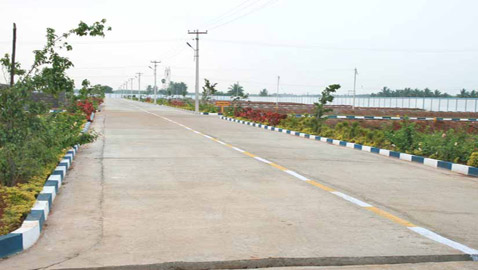
With Prime Minister Narendra Modi making accelerated infrastructure development in the country a top priority of his government, Indian companies engaged in manufacturing of concrete and allied products need to gear up for a significant surge in demand.
It has been projected that an investment of $1 trillion will be required during the 12th Five-Year Plan period (2012-2017) for overcoming the infrastructure deficit that currently restricts India’s growth and development. A large share of the projected investment requirement is expected to be met by the private sector. The projected investment requirement for infrastructure in the 11th Plan (2007-2012) was $514 billion.
Union Budget 2015-16 has already provided a major push to the infrastructure sector with a hefty Rs.70,000 crore increase in investment in 2015-16 over 2014-15 from the government’s funds and resources of central public sector enterprises.
The increase in spending on roads and highways, bridges, ports, airports, power and railways will, no doubt, present massive opportunities for manufacturers of concrete and allied products.
Concrete is a hardened building material created by combining a chemically inert mineral aggregate (usually sand, gravel, or crushed stone), a binder (natural or synthetic cement), chemical additives, and water. Concrete acquires a stone-like consistency on drying because of which it is considered ideal for construction of roads, bridges, water supply and sewage systems, factories, airports, railroads, waterways, mass transit systems and other structures.
Default mode of construction
The Ministry of Road Transport and Highways recently made rigid pavement the default mode of construction for national highways. Rigid pavement consists of a cement concrete pavement laid on a well prepared granular sub-base. Earlier, the flexible pavement was preferred due to low initial costs. In flexible pavement, various layers of granular materials are provided with a layer of bituminous materials on top. The decision to make rigid pavement the default mode of construction for national highways was taken after considering issues related to service life, fuel consumption, environment, weather conditions, availability of natural resources and maintenance.
The present government’s growing focus on expediting infrastructure projects will not only enhance the usage of concrete but also lead to greater adoption of precast technology by developers and contractors. Precast technology uses a reusable mold to cast the concrete, after which it is cured and then transported to the construction site. In the conventional method, concrete is poured into specific forms at the site. Precast concrete is preferred in construction since it ensures faster implementation of projects and consistency in quality. Also, precast concrete is considered safe, cost-effective, durable and environment friendly.
The third edition of Concrete Show India, an event dedicated to the concrete industry, will be held at the Bombay Exhibition Centre in Goregaon, Mumbai, from May 7-9, 2015. Organised by UBM India, the event is going to showcase concrete products, machinery, equipment, technologies, services and systems from various countries. A conference alongside will highlight the latest trends in building infrastructure. The co-located Bridges India 2015 will bring together key project personnel on one platform with the objective of bridging the gaps generally faced during project execution in construction of bridges and address the issues relating to efficiency and sustainability. It will also aim to address the engineering challenges encountered in bridge construction.











